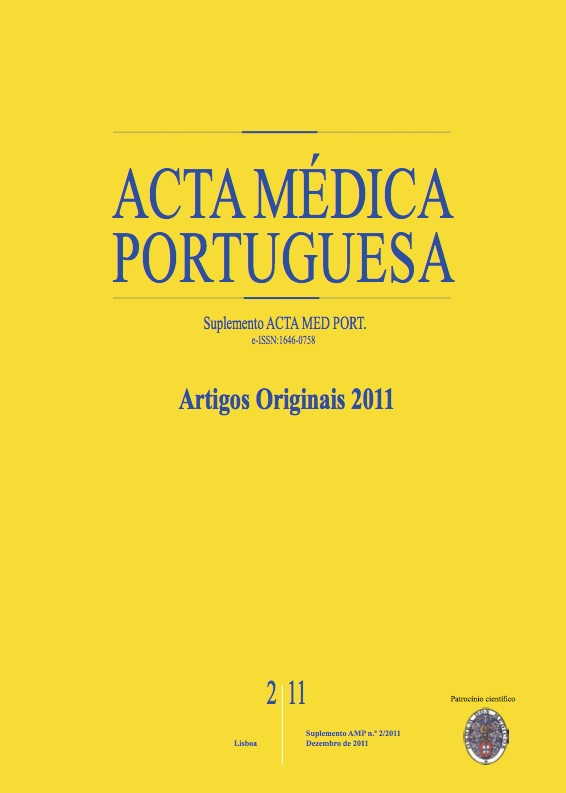Displasia renal multiquística: em defesa de uma experiência conservadora.
DOI:
https://doi.org/10.20344/amp.1437Resumo
Multicystic dysplastic kidney (MDK) is one of the most common congenital anomalies of the urinary tract and the main cystic renal disease in children. Our institution follow-up protocol of MDK uses, as has been performed more widely in the last two decades, a conservative attitude.To characterize MDK cases followed in our Outpatient Clinic of Pediatric Nephrology, evaluate their progress and reflect on the protocol adopted.36 MDK patients observed between January 1995 and December 2009 were included in this retrospective study and followed-up. In 35 children the diagnosis was the result of prenatal ultrasound. All children underwent a systematic protocol, including conservative treatment (no surgery) and periodic clinical, laboratory and ultrasound evaluation. All children underwent a MAG3 renogram or a 99mTc-DMSA renal scintigraphy and a voiding cystourethrography, only repeated in cases of vesicoureteral reflux (VUR).Eighteen children (50%) are male. The median age of first visit was four weeks. The median of follow-up was 65 months. The MDK was in the left kidney in 20 children (56%). The median age of onset was 10 and six weeks Contralateral nephro-urologic pathology was identified in 10 cases (28%): seven children with VUR (grade ≥ IV in three), two with ureteropelvic junction obstruction (UPJO) and one with mild pelvic dilatation. There was involution of dysplastic kidney in 27 cases (75%), partial in 24 and total in three. The involution rate was higher in the first 36 months. There was a progressive compensatory hypertrophy of the contralateral kidney, with the highest rate in the first two years of life. There was resolution of VUR in five of the seven units reflux (three spontaneous and two after ureteral reimplantation). The two children with UPJO underwent surgery. There was no malignant degeneration and there was not carry out any nephrectomy of dysplastic kidney. Urinary infection occurred in nine children (25%), three of which have VUR and two with UPJO. There were no cases of hypertension or decreased glomerular filtration rate.The results of this study are generally consistent with other casuistics and confirm the fairness of a conservative attitude in the approach of children with MDK. This clinical approach is safe, with a minimum incidence of complications, with tendency to involution of dysplasic kidney being the rule.Downloads
Downloads
Como Citar
Edição
Secção
Licença
Todos os artigos publicados na AMP são de acesso aberto e cumprem os requisitos das agências de financiamento ou instituições académicas. Relativamente à utilização por terceiros a AMP rege-se pelos termos da licença Creative Commons ‘Atribuição – Uso Não-Comercial – (CC-BY-NC)’.
É da responsabilidade do autor obter permissão para reproduzir figuras, tabelas, etc., de outras publicações. Após a aceitação de um artigo, os autores serão convidados a preencher uma “Declaração de Responsabilidade Autoral e Partilha de Direitos de Autor “(http://www.actamedicaportuguesa.com/info/AMP-NormasPublicacao.pdf) e a “Declaração de Potenciais Conflitos de Interesse” (http://www.icmje.org/conflicts-of-interest) do ICMJE. Será enviado um e-mail ao autor correspondente, confirmando a receção do manuscrito.
Após a publicação, os autores ficam autorizados a disponibilizar os seus artigos em repositórios das suas instituições de origem, desde que mencionem sempre onde foram publicados e de acordo com a licença Creative Commons









